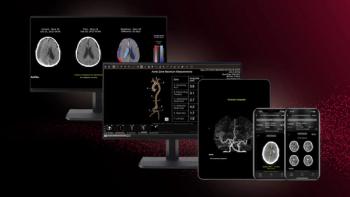
Incidental Chest CT findings May Predict CVD Risk
Incidental findings from diagnostic chest CT may help physicians identify patients at risk for cardiovascular disease.
Incidental information obtained from routine diagnostic chest CT scans can help predict cardiovascular disease risk, according to a study published in the journal
Researchers from the Netherlands performed a retrospective study that looked at the contribution of incidental findings in identifying subjects who may be at high risk of developing cardiovascular disease.
“Extensive literature has clearly documented the uncertainty of prediction models based on conventional risk factors,” co-author Pushpa M. Jairam, MD, PhD, said in a release. “With this study, we address to some extent, the need for a shift in cardiovascular risk assessment from conventional risk factors to direct measures of subclinical atherosclerosis.”
The study included a total of 10,410 patients who underwent chest CT for non-cardiovascular indications. Follow-up was a mean of 3.7 years, with a maximum of seven years. The researchers identified 1,148 CVD events among the group.
The CT scans from the identified cases and a 10 percent random sample of the baseline cohort were visually graded for several cardiovascular findings. The final prediction model included:
• Age
• Gender
• CT indication
• Left anterior descending coronary artery calcifications
• Mitral valve calcifications
• Descending aorta calcifications
• Cardiac diameter
“The model demonstrated good discriminative value, with a C statistic of 0.71 and a good overall calibration, as assessed in the validation cohort,” the authors wrote. “This imaging-based model allows accurate stratification of individuals into clinically relevant risk categories.”
Jairam cautions that more study is needed to validate the team’s findings.
Newsletter
Stay at the forefront of radiology with the Diagnostic Imaging newsletter, delivering the latest news, clinical insights, and imaging advancements for today’s radiologists.




























